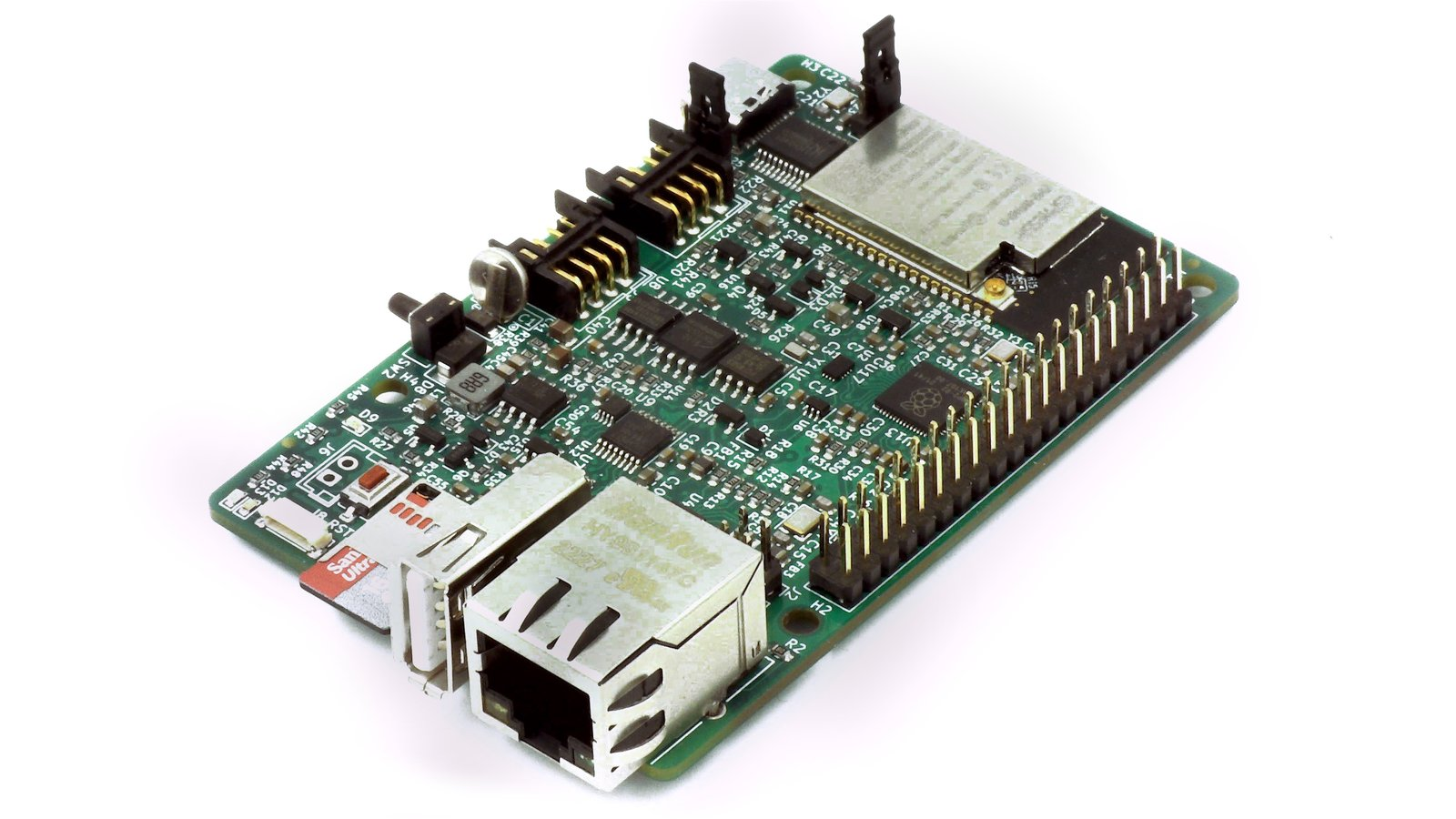Although the EsPiFF board has a Raspberry Pi RP2040 microcontroller that serves as a co-processor and looks like a Raspberry Pi 4 Linux SBC, it is really equipped with an ESP32-WROVER WiFi and Bluetooth module.
The idea behind this project is to create a Raspberry Pi 4 replacement for applications that don't necessarily require the processing power and multimedia capabilities of the Broadcom BCM2711 Arm processor used in the Pi or the adaptability of a Linux operating system but do need higher reliability and possibly 24/7 operation.
We were told it was done to maintain the Raspberry Pi form factor so that we could reuse existing Pi enclosures, but I can already see some readers raising their hands in the air or doing a facepalm before starting to write a comment complaining about the placement of the ESP32-WROVER module on the board since it would interfere with the PCB antenna operation. However, an external u.FL antenna is included in the kit.
Features & Specifications:
- ESP32-WROVER
with 8 MB PSRAM and 16 MB Flash in a Raspberry Pi 4 form factor
- 2 KB
of fast FRAM for permanent storage of process data. (Much faster than
EEPROM, for key variables.)
- 8
Mbit state-of-the-art ISSI flash
- The unpopulated footprint for up to 512 Mbit state-of-the-art ISSI flash
- Wi-Fi
connectivity (requires an external U.FL antenna)
- 10/100
wired Ethernet via IP101 PHY
- PoE
header, to use Raspberry Pi PoE HATs. EsPiFF can be powered from a HAT or
can power the HAT
- Micro
SD card socket for storage
- Up
to 3 UARTs
- USB
Type-C connector on CH340 USB-UART for programming as well as power draw
up to 5 V / 3 A for power-hungry HATs
- 40-pin
Raspberry Pi header, compatible with all Raspberry Pi HATs
- RP2040
co-processor to emulate the Pi on the 40-pin connector, with 16 MB Flash
- External
real-time clock, watchdog, and supervisor for high-availability, 24/7
applications
- On-board
supercap to keep the real-time clock running for days, even without power.
The supercap has, in contrast to a battery, a practically infinite
lifetime
- USB-Host
on the USB Type-A connector
- BOOT
button for the RP2040, to switch between USB-Programming and
USB-Host/Device
- ESP32
reset button and three user LEDs
- Unpopulated
JTAG header for kernel developers
Human-machine interfaces, outdoor applications where the board may be stored in a water- or air-tight container without worrying about overheating, residential and industrial automation systems, and more are some use cases where the EsPiFF board may be more suited than the more potent Raspberry Pi.
The EsPIFF board on Crowd Supply has been launched by MDC-Service Wittenburg GmbH with a $2,250 target. The only prize is a $55 EsPiFF complete with all necessary cords. Backers should anticipate their rewards to ship in April 2023; shipping costs are $8 for the US and $18 for the rest of the globe.





















0 Comments